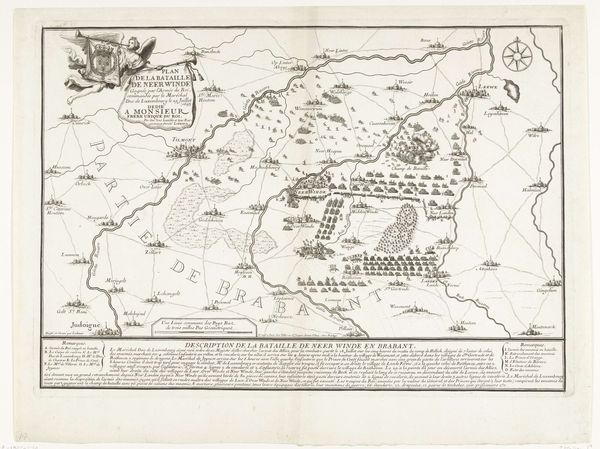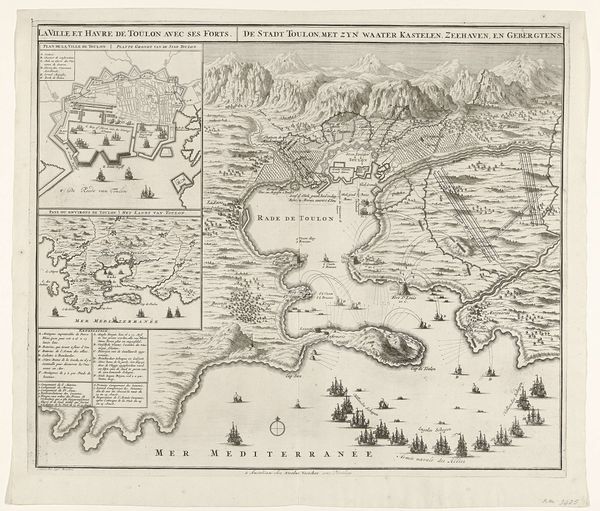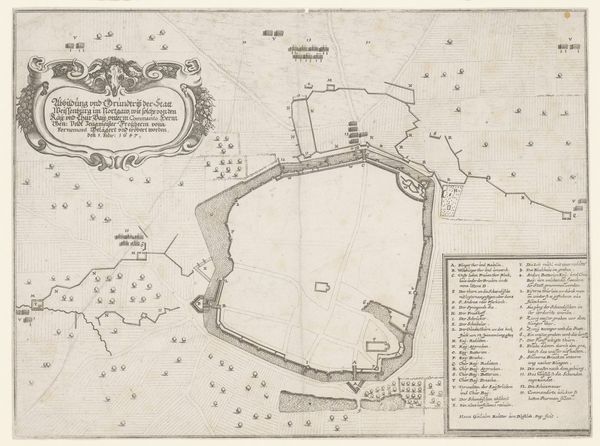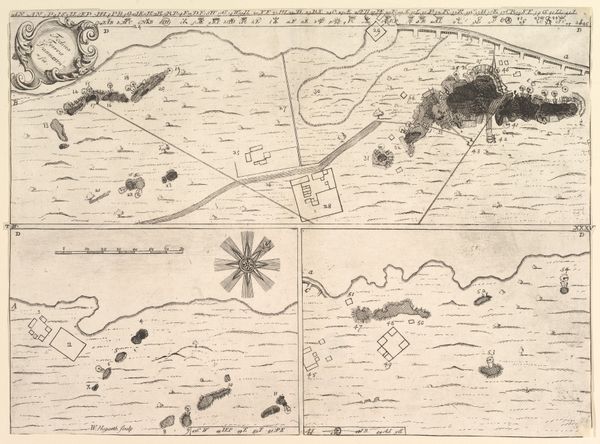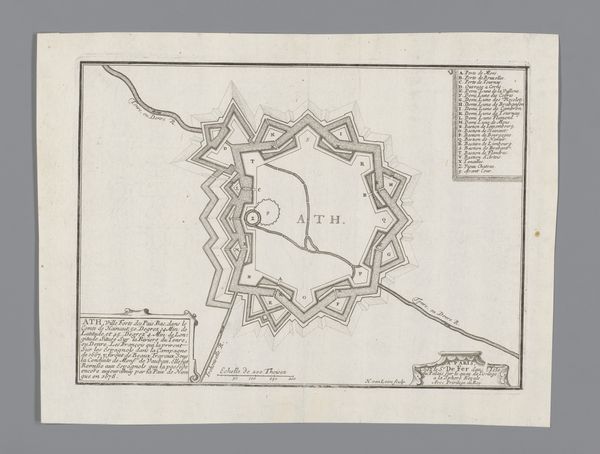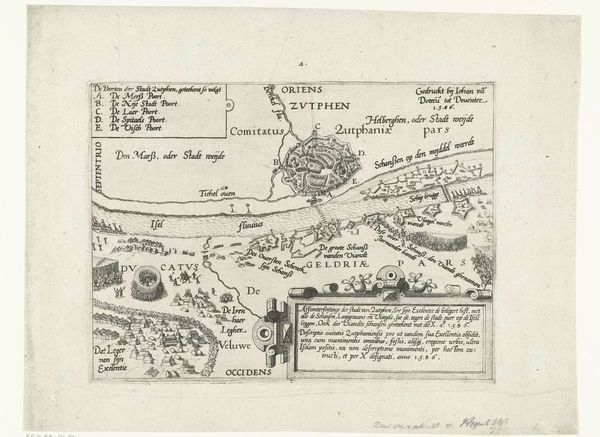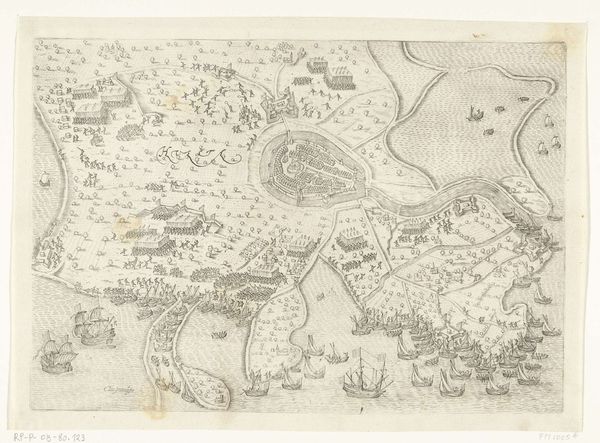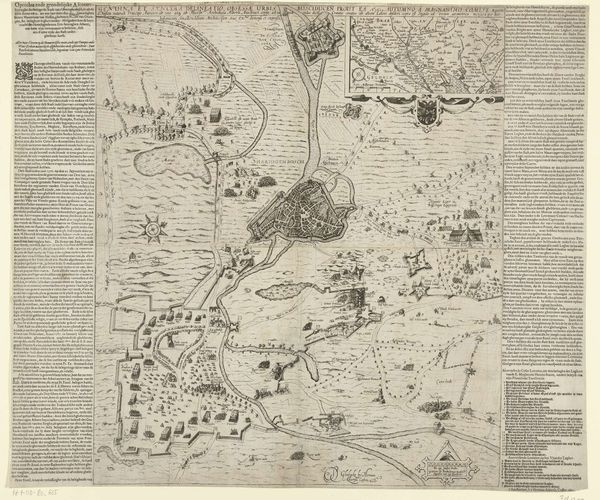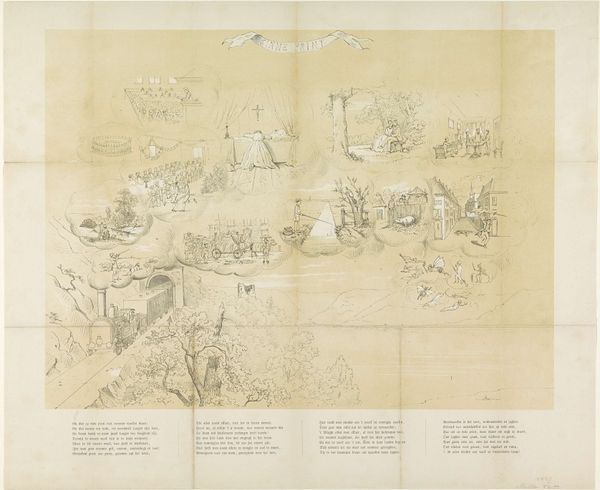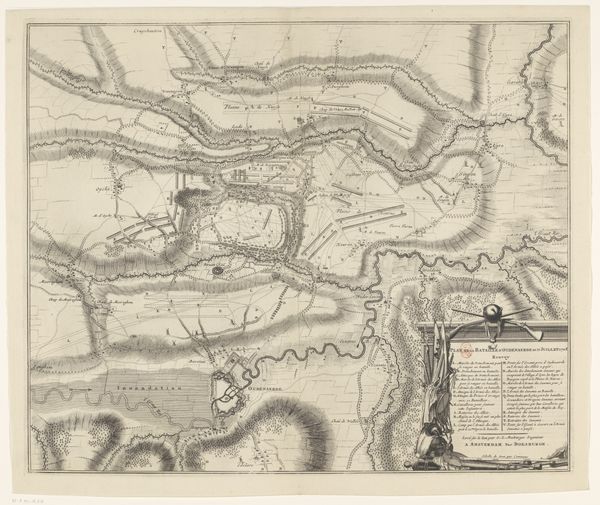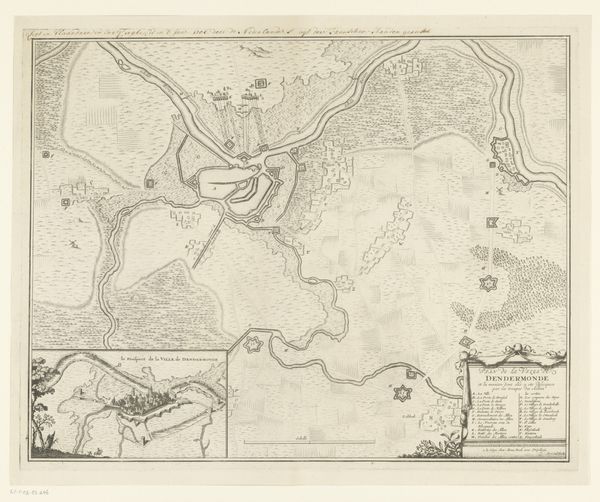
print, paper, ink, engraving
#
dutch-golden-age
# print
#
landscape
#
paper
#
ink
#
geometric
#
cityscape
#
history-painting
#
engraving
Dimensions: height 432 mm, width 530 mm
Copyright: Rijks Museum: Open Domain
Curator: This print, held here at the Rijksmuseum, depicts the "Siege of Grol by Frederik Hendrik" in 1627. Hendrick Hondius I captured it as an engraving with ink on paper. What is your initial response to it? Editor: It’s strangely beautiful, considering the subject matter. The lines are so delicate, creating a sort of abstract, patterned landscape, until you realize it’s a depiction of war and control. There's a stillness that belies the presumed violence. Curator: Precisely. As a print, its production speaks to a need for wider dissemination of information and the carefully orchestrated image that Frederik Hendrik wanted to convey of the siege and the Dutch military prowess. These prints weren’t just art; they were news and propaganda. Editor: Propaganda, yes, I suppose, and so detached! The scene almost feels imagined, viewed from some godlike perspective. I find it compelling how Hondius, in his rendering, uses the landscape—the trees, the fields—as this silent witness to the strategic movements and eventual conquest. It’s chilling. Curator: The medium—engraving—is critical to consider. The painstaking labor, the deliberate act of carving lines into a metal plate to reproduce this image, emphasizes the controlled, rational approach to warfare valued at the time. The stark black and white reinforces this idea, stripping away the chaos and emotion of battle to present a legible plan of action. Editor: Yet, I keep getting drawn back to that feeling of remove, of artistry triumphing, somehow, over the brutality it depicts. It feels like an ode to intellect and geometry over passion and impulse. There’s this odd contrast that is really speaking to me. It is a historical document and an interesting artwork, both at once. Curator: Indeed. Reflecting on the print’s creation, one has to also recognize its wider circulation; as printed matter on paper, it's something mobile, easily transported. Each copy spread both factual news, and promoted national ideology among merchants, politicians and a broader Dutch public. Editor: It leaves me contemplating our relationship to images of conflict, now and then. Even with today's onslaught of digital imagery, I wonder about the different emotional effect the stark, crafted lines of an old engraving, like this one, elicit within us. Curator: That’s insightful, considering its status today within the museum. Its careful construction underscores how much "history" is a process, how representation molds and solidifies certain cultural ideas over time. Editor: And it makes you wonder whose version of events made it into the etching. Food for thought.
Comments
No comments
Be the first to comment and join the conversation on the ultimate creative platform.
